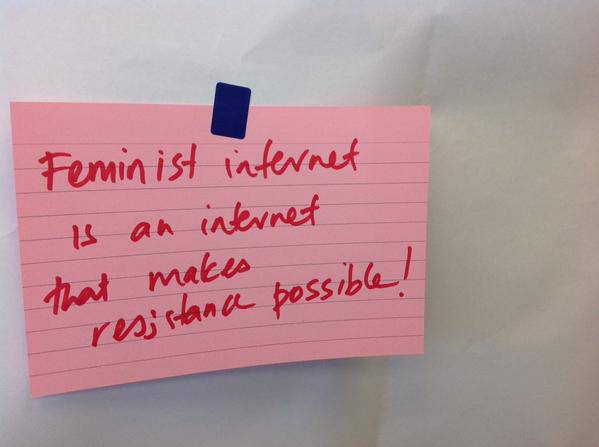In August 2016, APC along with some activists and feminists which also included Feminism in India revised and released the 17 Feminist Principles of the Internet. Often I have been asked “Why do we need Feminist Principles to run the Internet when women and queer individuals already have the freedom to access the internet ‘just like men’, you are just as safe or vulnerable”. Being a woman on the internet, I couldn’t have heard something more foolish.
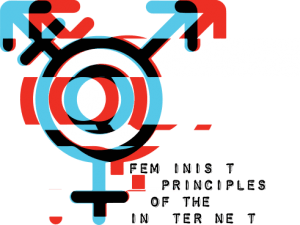
“A feminist internet works towards empowering more women and queer persons – in all our diversities – to fully enjoy our rights, engage in pleasure and play, and dismantle patriarchy. This integrates our different realities, contexts and specificities – including age, disabilities, sexualities, gender identities and expressions, socioeconomic locations, political and religious beliefs, ethnic origins, and racial markers.” – Preamble of the Feminist Principles
This is why we need these principles, this is why I #ImagineAFeministInternet!
Access
In India, only 29% of women have access to the internet (and men have 71% access to the internet), information about other genders is not available. Gayatri Buragohain, from Feminist Approach to Technology in a Scroll.in article, said “Women are denied access to the internet just like they are denied access to mobility.” They are further denied access to information by not being allowed to be on the internet. There is a societal fear that women would ‘bring shame’ if they were given mobile phones (which is one of the main access point to the internet). Misconceptions like these actively keep women from accessing information about sex, sexuality, reproductive health, health care, government services, pleasure on the web. In a larger sense, it denies access to technology and thus keeps them out of spaces of technology, design, and coding.
This principle aims to change the terms of access for queer people and women. It would give them the right to access all components of technology. For example: Under the Dharavi Diary project, girls (as young as 14) in the slum area of Dharavi now have more access to the internet and have used this to code and design applications like Woman Fight Back and Paani Hai Jeevan. Thus, access when provided to all, can revolutionize societies.
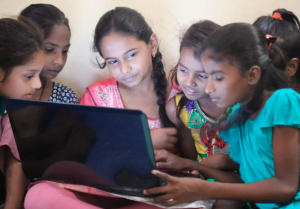
Image Source: Dharavi Diary
Movements and Public Participation
In 2011, a book called ‘Why Loiter’ came out, three years later (to mark the anniversary of the Delhi- gang rape) the hashtag #WhyLoiter started trending on twitter and it took the online community by storm. Women started posting pictures of themselves and stories about how they were occupying and reclaiming public spaces, which are traditionally used by men, and used the hashtag #WhyLoiter to spread these stories. The resistance to male domination and patriarchy was being actively engaged in both the virtual and physical spaces through this. Movements like Pinjra Tod and Girls at Dhabas are other revolutionary movements that reclaim public spaces by using the online as a mouth-piece.
The #BlackMonday hashtag was used by Polish women to protest the abortion laws, they used the hashtag to mobilize people and spread awareness. This hashtag became hugely popular and South Korea began using it to stage its own protest. A movement like this demanded accountability and transparency from the state and crossed borders. It became a platform for feminist movement building.
By seeking accountability from law and policy makers, by rewriting the rules of how the internet can and should be used, these and many other movements like theirs showed that there is a NEED for women and queer people to be part of Internet Governance. Without this, we can not hope to have a feminist world.
Currently, the global gender report card on internet governance is on a positive upward rise and is being recognized.
Video Source: BBC
Economy
In 2011, Facebook had refused to take down a page dedicated to ‘Rape Jokes’ insisting that “Facebook is a space where people should openly discuss and express their views” but in 2013 felt it necessary to remove the picture of a breast cancer survivors chest tattoo. Facebook seemed to care more about offending men and men’s free speech, than women. As a feminist, it is becoming clearer than ever that capitalism is a tool for oppression of women and is closely linked to the patriarchal structure. One will not and cannot break unless the other does. The aim of the feminist principles is also to interrogate and challenge the manner in which capitalism drives technology towards profit, privatization, and control (of queer people and women). The aim is to create in place alternative economies that are formed on the principles of cooperation, solidarity, commons, environmental sustainability, and openness to counter the white male capitalistic voices that control the internet. By ensuring that we share, use, and spread information about free and open software, tools, and platforms we would be moving towards such an economy.

Post Masectomy Tattoo Image Source: Huffington Post
Expression
An important aim of the feminist principles is to ensure that the Feminist Discourse is amplified, that the internet becomes a space where lived narratives and voices of women, queer people, and the marginalized are heard. Through this, we can actively resist the hegemonic powers of the state and other actors who dictate the terms of the discussion. In August 2016, when India’s only women run rural newspaper Khabar Lahariya went digital, it did exactly this. Reporting on issues like caste, gender, and rural grievances with a deep understanding of the structural barriers has been foremost for KL. The newspaper is managed and run by women, most of whom belong to marginalized communities.
Videa Source: Khabar Lahariya
Feminist activist and journalist, Mona Eltahawy believes that no revolution is complete without overthrowing the dictators, both in the streets and in our bedrooms. A feminist internet would follow this as principle. The freedom to explore their sexuality without patriarchal surviellance. Here, women and queer people have freedom of expression. This includes having the freedom to access information about sex, sexuality, being able to speak up about sexuality and pleasure, to not being surveilled by state and non-state actors, and to not have restricted, controlled, or regulated access to the internet as these are inalienable human rights of all individuals.

mage Source: Ella Strickland de Souza
This also means that pornography and “harmful content” will be seen through a critical feminist lens rather than take a causal linkage between pornographic consumption and violence against women (This is a wonderful read to see how pornography can be empowering!). By creating alternate erotic narratives that locate queer people and women in the center, this principle aims to resist the male patriarchal gaze. A google search of Feminist Porn or checking out this (unfortunately largely west-centric) site might give you an idea of what we mean.
Agency
Areas in and around Uttar Pradesh have been in the news for the selling of rape videos and the CBI has likened these to pornographic videos. The massive issue in this horrible analogy is that pornography is shot consensually and rape videos are not. There is no concept of consent or right to privacy that has been applied in this case.
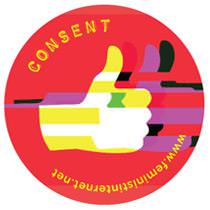
Image Source: FeministInternet.net
A feminist internet allows women and queer people to ensure that their rights are guaranteed. It does this by taking consent and the right to privacy and data very strictly. Women and queer people need to be able to make decisions about what part of their lives can and cannot be online. It refuses the idea of surveillance by the state (as it is a patriarchal tool to oppress and restrict movement of women and queer people) and the capitalistic idea of selling personal data for profit. Every person has the right to their privacy and data at all times, and the right to know who else has access to their data and to wipe it out from internet memory whenever they want to.
On June 25, among the 50 people climbing the Chamundi Hills as a form of protest against sexual assaults, were two teenage survivors of sexual assault. The voices of these survivors should be heard, but the fact that they were under the age of 18 and were alienated from the communities would’ve posed as a threat to their jobs and lives. Yusuf Omar, a journalist got their narratives via using snapchat filters. Snapchat Filters were used as a mask for them to use while they talked about their experiences. Being anonymous meant that there would be a shift from focusing on scrutinizing who they are to their stories. Thus, anonymity is vital to a feminist internet as it helps women and queer people speak out without fear.
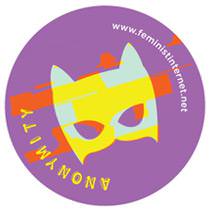
Image Source: FeministInternet.net
Children and the youth are major stake holders on the online community. It is vital that their voices and experiences are part of the decision making process, where they have stake in making choices that promote their safety, privacy, online security, and information access, including positive information about sex, gender, and sexuality.
Cyber bullying, image-based sexual assault, rape threats, gender based hate speech are all often real threats that women and queer people have to face on the internet. They are probably the largest demographic to face this threat. Recently, a woman of Indian-American origin shared her experience of being threatened over e-mail by a stranger, Qandeel Baloch was killed for being an outspoken social media “one woman army” in Pakistan, women have been told not to put up their pictures on social media for ‘their own safety’. Instances like these and many others are examples of online violence and surveillance faced by women on a regular basis. This principle calls for online stakeholders to address the issue of online violence and recognize this as a broader issue of gender based violence.
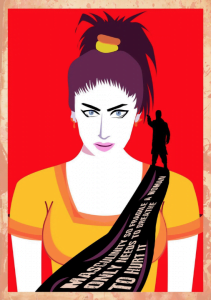
Image Source: Chayn Pakistan
These principles are important, now more than ever. We, as an online community, need to come together to ensure that through following these principles, we make a more gender just online space.
You can follow this interesting conversation on having a Feminist Internet that was had in a FemInt conference in Mumbai organized by Point of View Mumbai.
Websites to access for more Feminist and IT based information:
- Genderit.org
- Internetdemocracy.in
- Feministinternet.net
- Takebackthenet.apc.org
About the author(s)
I spend most of my time trying to smash the patriarchy, keep my privilege (of being a cis-upper middle-class woman) in check, and hoarding books. In my free time, I travel and work in the field of gender research and writing. I believe that equal rights, poetry, and pani puri can change the world.
